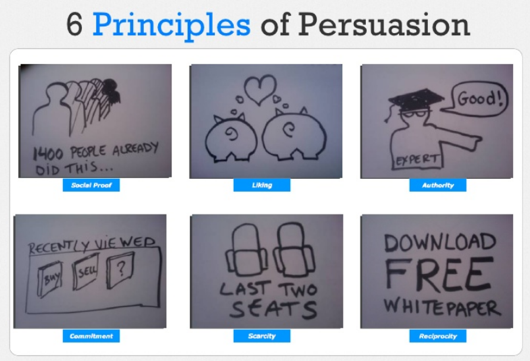What’s the first thing you say to a potential customer when knock on a door and the homeowner answers?
There’s a very small chance you speak with someone at each home you visit.
In fact, you’ll typically only speak with about 25 – 30% of the doors you knock. Going through a neighborhood and only talking to one or two people can be extremely demoralizing and tiring.
It’s like playing a game of “Whack-A-Mole” – you never know which door is going to open, but when it does, you better be ready.
The real 1st impression
Door to door salespeople walk house to house knocking doors and ringing doorbells, only to speak with a few quality prospects each day. It’s hard to keep your energy up but it’s absolutely critical to be prepared for someone to answer each time you knock on a door.
The first 30 seconds of your introduction and pitch are vital to the likelihood of your success.
Luckily for sales reps it doesn’t start with what you say, but how you dress. Your appearance and how your carry yourself is the homeowner’s first impression of you. Your body language needs to exude confidence and professionalism.
The first 30 seconds
When you’re lucky enough to get someone to finally answer, don’t blow it from the start by being generic and boring.
There’s very few people that actually like to see someone standing at their door waiting to sell them something when they open it. You need to be clever, original and engaging.
Akwasi Frimpong was on the Can’t Knock This podcast with Sam Taggart and talked about his favorite introductions. If you’re not familiar with Akwasi, he’s quite impressive. He’s the number one distributor for Kirby in the Golden West Division who sold 19 Kirby’s in his first 14 days.
He was also the fastest promoted distributor in the division, and is currently attempting to qualify for the 2018 Olympics in Pyeongchang, South Korea.
Oh, and did I mention he’s also an African American selling door to door in Utah, which is predominantly white – he said it not me. Many salespeople, regardless of race, come up with excuses as to why they don’t have success. His response?
“Don’t play the victim and have confidence. Anyone will let you in as long as you dress nice, present yourself well and know what you’re talking about.”
He uses this to his advantage at the door and said his wife always gives him a hard time because of how he’s always able to get into the home of the old, white woman who’s 60 years old.
One of the first things he does in his introduction is make a joke. When asked about it on the podcast, he said he introduces himself and says something along the lines of, “Hello! Hello! Hello! I’m a black guy, not a bad guy, but don’t worry you don’t have to buy anything.” He uses humor to break the ice and add a human element to his sales pitch.
Part of the reason this works so well for Akwasi is because of his confident, energetic approach. He’s not saying hello three times in a dull, quiet voice. He says it with confidence and excitement, showing the potential customer that he wants to be there.
Customers can tell whether or not you want to be there. They can see it in your eyes and your body language; they can sense it. If you don’t want to be there, what’s going to make them want to be there?
Getting past 30 seconds
Capturing the homeowner’s attention is step one, but one of the most important things to do in a sales pitch is to have direction. If you weren’t able to get a prospect fully engaged in your introduction, start by establishing a pain point to understand a customer’s needs and try offering something for free.

The principle of reciprocity states that a person is much more willing to do something for someone who has already done something for them.
Akwasi does a great job of this in his pitch.
“Your neighbor Susie actually gave me a glass of water because of how hot it is outside, which was really nice of her. But when I was showing her our new model, she mentioned the highest traffic and dirtiest area of the house was her stairs. What would you say your highest traffic area is in the house is?”
He’s identifying a pain point with this question, and after getting a response says:
“We’re just going around showing this new model and offering to clean one room for free and there’s no catch. I actually get paid about $25 just for cleaning your house, so you’d not only have a clean room, but you’d be helping me out as well. Can you show me the hallway you were talking about that sees the highest amount of traffic?”
This is critical to his success. He uses a disarming statement that eliminates the pressure to make a purchase and has a clear direction for his pitch. His goal is to get inside the home to demonstrate the effectiveness of a Kirby. Customers love honesty. It shows the human side of sales and most people genuinely want to help others. By being upfront and honest, Akwasi is using the principle of reciprocity and developing a better relationship with the customer.
“One of the top reasons most people don’t want you in their home because of the pressure to buy”
Once you’re in the home
If you’re struggling throughout any part of the sales process, take some time to develop a clear path for each part of your presentation.
- Start with your introduction,
- Move to your offer,
- Get inside the home and continue through the sale.
Akwasi is an absolute rock star at this because he always has a direction that he wants to go. Once you’re inside the home and starting a presentation, you should have two goals. The first should be to continue to build trust and rapport. The second should be to build value in your product or service.
To establish a deeper level of trust, look for things around the house to start a conversation. Most people have pictures around their home or something with their favorite sports team.
Talk to the homeowner about things you can relate to. It shows that you have an interest in their life and you’re not just trying to make a sale. Doing this will also keep you engaged because it’s something you share a passion for.
If all else fails, you can always fall back on how long they’ve lived in the house or where they’re originally from.
It’s important work these topics into your presentation and not just be focused on the sale. Developing a relationship will help establish your credibility and give you the opportunity to build more value into your product because the customer trusts what you’re saying.
Demonstrating how effective your product is like Akwasi does with Kirby, or showing how much you can save a customer on their energy bill is always the end goal. How you get there will often differ based on the conversations you have, but the process should generally be the same.
“Getting into the home is overcoming the first fear of the customer.”
How to create your pitch template
The key to getting invited inside the home is to have an outlined roadmap that will give you direction. This sample template should serve as a guide, but ultimately you need to determine what you want the end result of each step in the process to be so that you know where you need to take the conversation next.
Create a great first impression
- Dress professionally
- Be over-dressed rather than under-dressed
- Carry yourself with confidence, energy and professionalism
Goal: Make the customer think favorably of you and make them want to talk to you
Create a unique & clever introduction that captures the customer’s attention
- Be warm and friendly
- Add the “human element” to your introduction
- Make a joke if you’re comfortable enough to do so
- Eliminate the pressure to buy
- Establish credibility and trust
Goal: Breakdown the customer’s guard to have a more natural conversation where the customer feels comfortable sharing information with you
Determine the customer’s pain points / needs
- Try to establish a pain on your approach to the house
- Look around the customer’s house for signs of their needs
- Don’t “feature dump” on the customer by simply listing everything your product does and hoping one of them resonates
- Ask why it’s a pain and how solving it would help them
Goal: Gain a deeper understanding of what value your company can offer the customer
Offer a free service
- Use a disarming statement
- Demonstrate your willingness and desire to help the customer
- Be upfront and honest if you doing something for them will benefit you
- Ask the customer to show you / take you to the part of the house you want to do your demonstration in
Goal: Be invited inside the home to do your presentation
Demonstrate the effectiveness and benefits of your product through a presentation
- Build value that differentiates your company from any other
- Do a side by side comparison if possible
- Build trust and rapport throughout the presentation
Goal: Demonstrate what separates your product from others and move toward a decision
For other ideas on bumping up your sales pitch check out Sales Pitch Examples here.
_____
SPOTIO is the #1 field sales engagement and performance management software that will increase revenue, maximize profitability, and boost sales productivity.
Want to see a product demonstration? Click here to see how SPOTIO can take your sales game to the next level.



